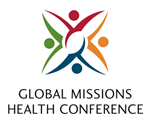Measuring What Matters in Community Transformation
In management, there is a saying, "you get what you inspect, not what you expect". However, how do we know exactly what to inspect in the transformational development process? for example, if we looked only at the instruments showing the vial signs of a patient in a coma but kept alive on life support systems, the instruments would show that vital signs are within the ideal range. However , the doctor treating this patient would be most concerned about when the patient's CNS would take over responsibility for all the vital organs to function normally. We understand this well in Medical science, but somehow forget all about it when it comes to community development. Empowerment takes a back seat, and other indicators take on prominence, despite the fact that we know that things like vaccination levels, disease incidence etcetera can be made to "look impressive" by directing inputs in a particular way. We are often content to become service providers for health care and management, and take on the responsibility for 'ensuring that the community is healthy'. We are even happy with the community being a passive recipient of our services, because the outcome is good - immunization levels are up, people are healthy. But what happens when the program is over? Do things just revert back to where they were before we started? does anyone go back to check? A good friend of mine , Dr. Stanley Foster (who spent over 50 years in Public Health in CDC and Emory University) is a strong advocate for evaluation of intensive massive health care projects two years after the projects are over!!!
One can say without a doubt that if the community was not engaged from the beginning in the planning and empowered as a part of the project design to take responsibility for their health ; the outcome would be pretty embarrassing. This session focusses on identifying what matters in the development process (Empowerment, progress towards the MDGs, etcetera) & finding ways to measure them.
One can say without a doubt that if the community was not engaged from the beginning in the planning and empowered as a part of the project design to take responsibility for their health ; the outcome would be pretty embarrassing. This session focusses on identifying what matters in the development process (Empowerment, progress towards the MDGs, etcetera) & finding ways to measure them.
Related Content






Comments